2.2: Visual Elements of Art-Shape
- Page ID
- 156846
Overview:
- The design element of shape is the next element in the walk up the ladder of dimension. Shape has two dimensions, length and width. Shapes can be regular or irregular, simple or complex.
Types of Shapes
Shapes can be classified into two types: Organic and Geometric Shapes.
Organic Shapes:
- Organic shapes are made up of unpredictable, irregular lines.
- They may seem unrestrained and chaotic, reflecting the characteristic of living things.
- The Parakeet and the Mermaid is one of the largest cut-outs Matisse ever made. The two creatures of the title are nestled among fruit and his – by now – characteristic algae-like leaf forms.1
Read about the Matisse cutouts

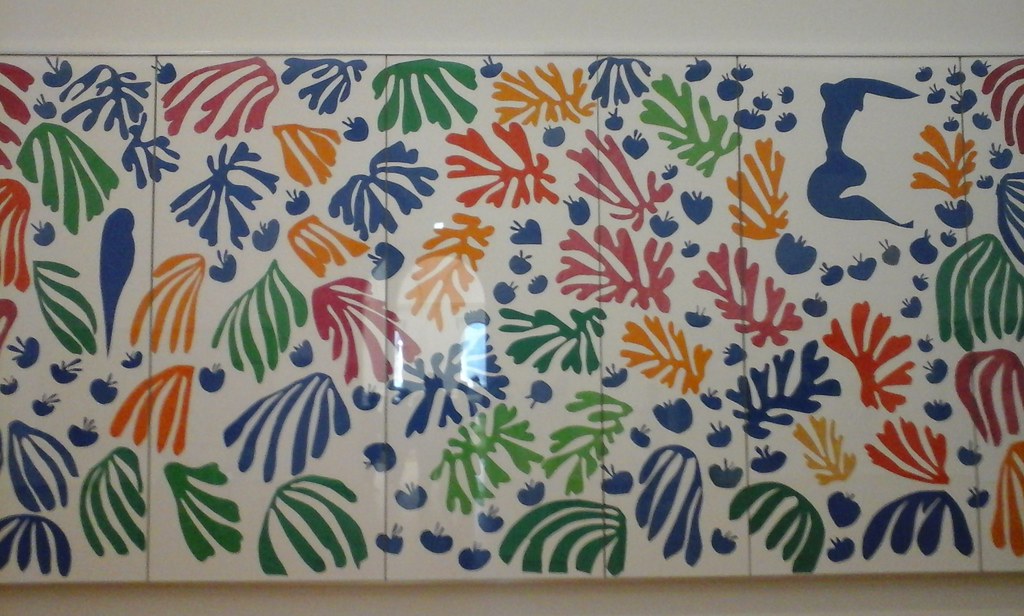
Henri Matisse. The Parakeet and the Mermaid. 1952. "Stedelijk Museum" by Mario RM is licensed under CC BY-SA 2.0.
Geometric Shapes:
- Geometric shapes are mathematically regular and precise.
- Hans Arp (1886-1966, France, lived Switzerland), in his work Untitled, used torn paper and cut shapes to create an abstract composition. While squares are geometric objects, Arp’s torn and irregular edges transform them into organic shapes. The orientation of those shapes roughly approximates a grid structure, but again, their deviation from a regular order implies a chaotic and accidental arrangement. In this work, Arp is dancing on the “edge of order.”
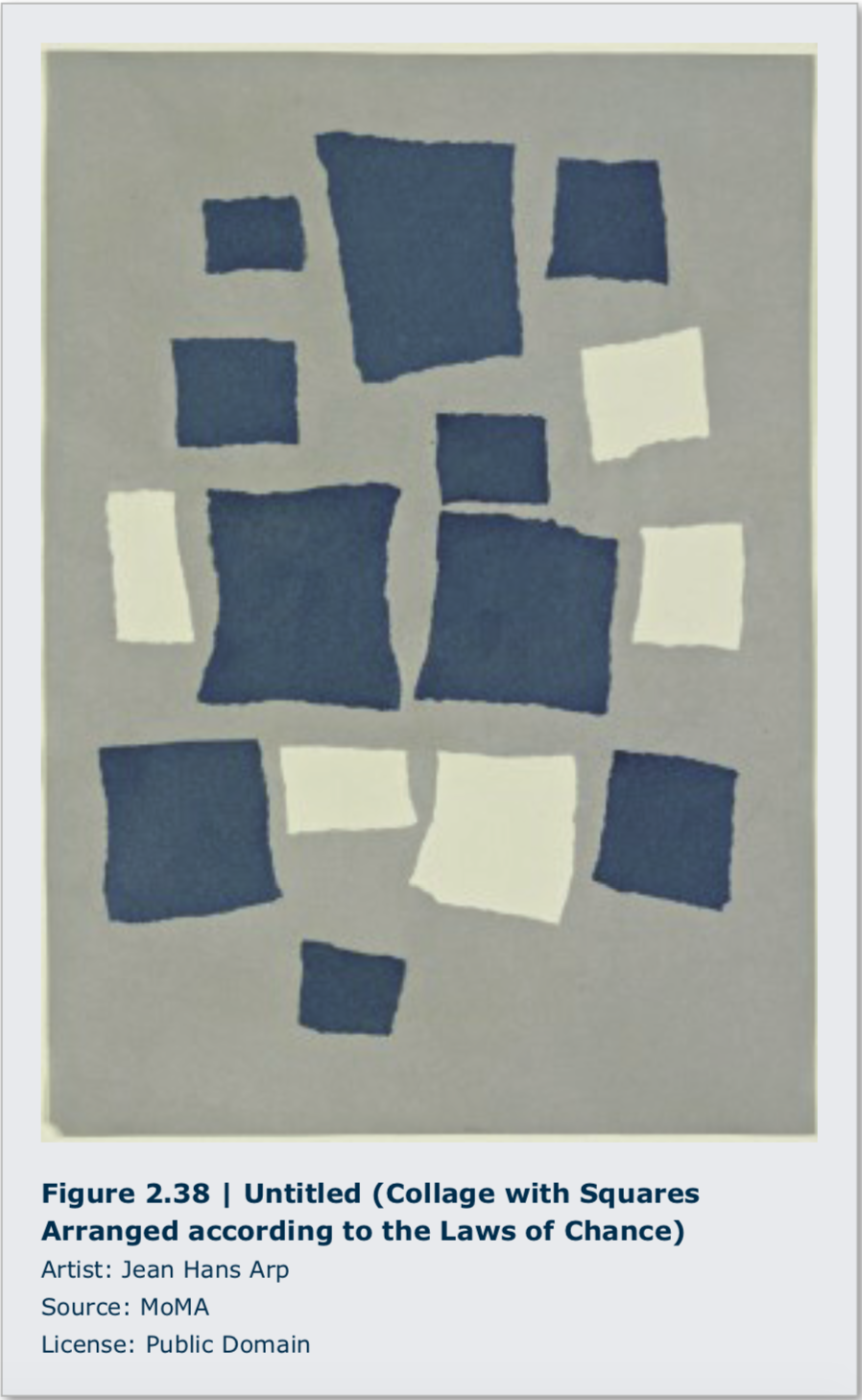
- Frank Stella's Hyena Stomp uses geometric shapes.
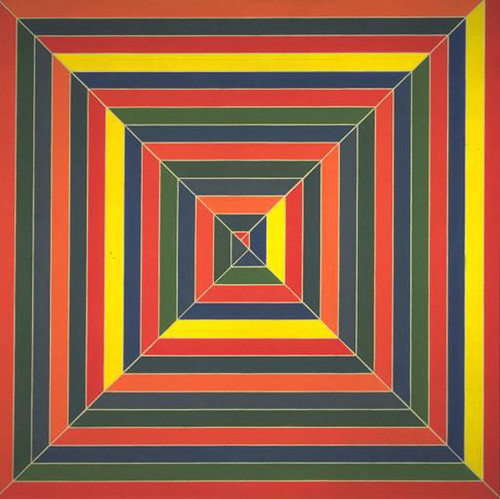
Frank Stella, Hyena Stomp ,1962, Tate, © ARS, NY and DACS, London 2022. "Frank Stella Hyena-Stomp-1962" by ateliertally is licensed under CC BY-NC 2.0.
- Piet Mondrian is another artist who used geometric shapes in paintings. In his Composition with Yellow, Blue, and Red, Mondrian, uses straight vertical and horizontal black lines to divide his canvas into rectangles of primary colors. 3
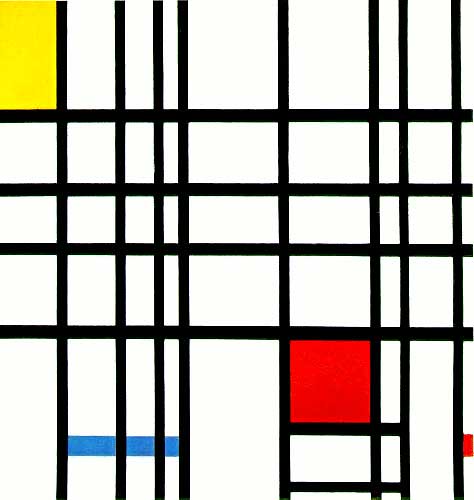
Piet Mondrian, Composition with Yellow, Blue and Red, 1937–42, oil on canvas, 72.7 x 69.2 cm "Composition with Red Yellow and Blue (Piet Mondrian)" by uhuru1701 is licensed under CC BY-SA 2.0.
Positive / Negative Shapes and Figure / Ground Relationships
- Shapes animate figure-ground relationships. We visually determine positive shapes (the figure) and negative shapes (the ground).
- One way to understand this is to open your hand and spread your fingers apart. Your hand is the positive shape, and the space around it becomes the negative shape. You can also see this in the example above. The shape formed by the black outline becomes positive because it’s enclosed. The area around it is negative.
- Remember that a positive shape is one that is distinguished from the background. In Diego Velázquez's Las Meninas, the figures become positive shapes because they are lit dramatically and hold our attention against the dark background. What about the dark figure standing in the doorway? Here the dark shape becomes the positive one, surrounded by a white background. Our eyes always return to this figure as an anchor to the painting’s entire composition.
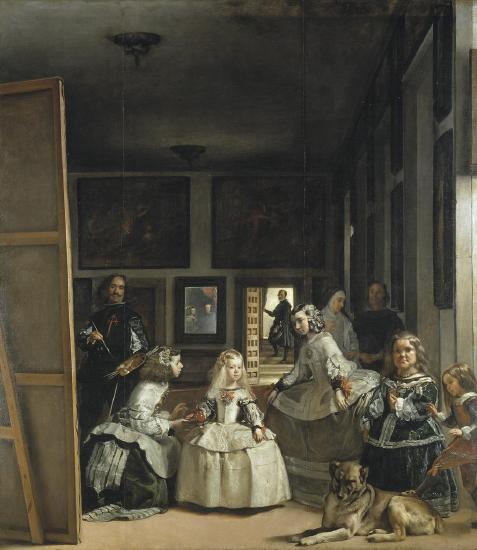
Diego Velázquez, Las Meninas. 1656. Oil on canvas. "Diego Velázquez, Las Meninas (1656)" by raelga is licensed under CC BY-NC 2.0.
- In three dimensions, positive shapes are those that make up the actual work. The negative shapes are the empty spaces around, and sometimes permeating through the work itself.
- A modern work that uses shapes to a dramatic effect is Alberto Giacometti’s Reclining Woman Who Dreams from 1929. In an abstract style, the artist weaves positive and negative shapes together, the result is a dreamy, floating sensation radiating from the sculpture.
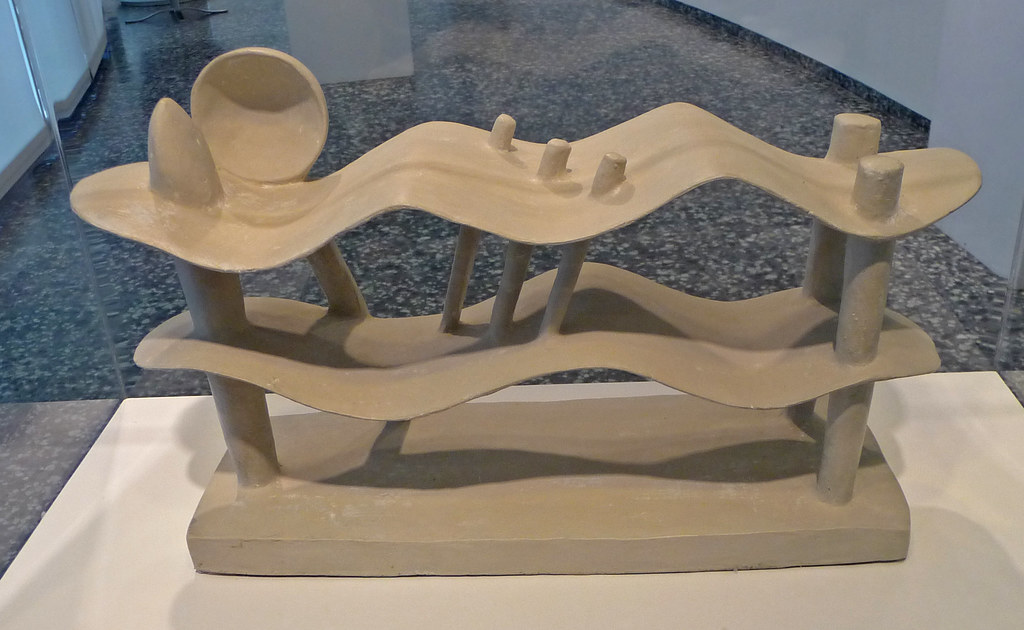
Alberto Giacometti’s Reclining Woman Who Dreams, 1929 is licensed under CC BY-NC 2.0.
- A positive shape is defined by its surrounding empty space (the negative space)
- In visual form, positive and negative are often represented by black and white, but any color combination can work.
- Shepard Fairey uses positive and negative shapes to create a strong visual impact in this work. The black shapes and blank white background contrast and complement each other. 1, 4
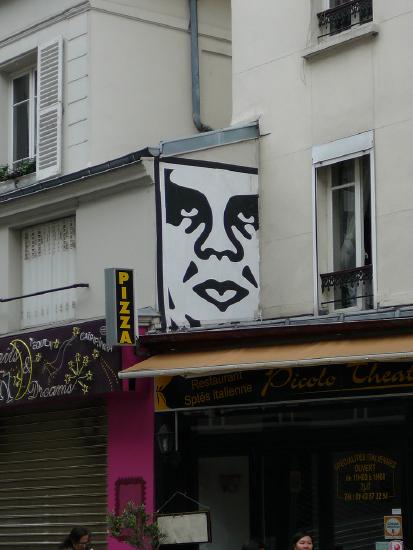
Shepard Fairey, Obey, 1996. Campaign poster "Shepard Fairey Obey @ Parigi" by Strifu is licensed under CC BY-NC-SA 2.0.
Kara Walker
“The illusion is that most of my work is simply about past events, a point in history and nothing else.” Kara Walker.
Kara Walker was born in Stockton, California, in 1969. She received a BFA from the Atlanta College of Art in 1991, and an MFA from the Rhode Island School of Design in 1994. The artist is best known for exploring the raw intersection of race, gender, and sexuality through her iconic, silhouetted figures. Walker unleashes the traditionally proper Victorian medium of the silhouette directly onto the walls of the gallery, creating a theatrical space in which her unruly cut-paper characters fornicate and inflict violence on one another. 5

"African't - Kara Walker (1091)" by Ron of the Desert is licensed under CC BY-ND 2.0. Studio Museum Harlem
- There are two broad categories of shape: geometric and organic. Geometric shapes are regular and ordered shapes using straight lines and curves. Organic shapes are generally irregular and often chaotic.
- In two-dimensional artworks, shapes are figures placed on a two-dimensional surface that is known as a ground. This creates a relationship between foreground and background known as the figure/ground relation. The figure is the object that appears to be in front of the ground. In some artworks this relationship is intentionally unclear. In this case, an effect known as figure/ ground reversal can occur.
- In figure/ground reversal, what was seen as the positive shape of the figure can also be seen as the negative space of the ground. This effect disrupts the sense of space in an artwork and disorients the viewer.
Sources
- DeWitte, Debra J., Larmann, Ralph M., and Shields, M. Kathryn. Gateways to Art: Understanding the Visual Arts, Third Edition. 2018
- HENRI MATISSE: THE CUT-OUTS. Tate Museum. www.tate.org.uk/whats-on/tat...-guide/henri-8=
- Shape and Form. Khan Academy. https://www.khanacademy.org/humaniti...rt-apah/a/form
- Obey Giant. Shepard Fairy. https://obeygiant.com/
- Art 21. https://art21.org/
- McKinney, Dee and Shepard, Katie, "Western Civilization I" (2018). History Open Textbooks. 3.
- Pamela Sachant, Peggy Blood, Jeffery LeMieux, & Rita Tekippe. https://oer.galileo.usg.edu/history-textbooks/3

